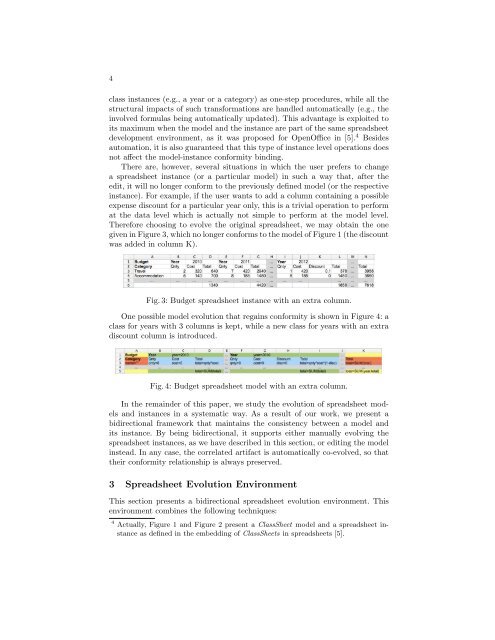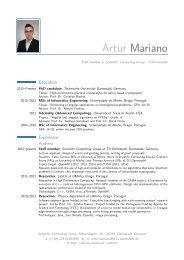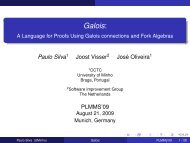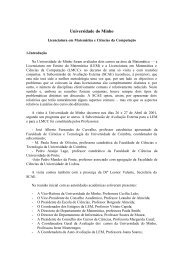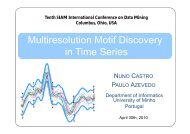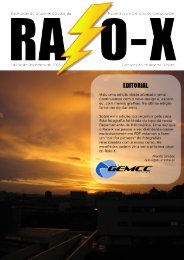Spreadsheet notoriously
Bidirectional Transformation of Model-Driven Spreadsheetsâ - ALFA
Bidirectional Transformation of Model-Driven Spreadsheetsâ - ALFA
- No tags were found...
Create successful ePaper yourself
Turn your PDF publications into a flip-book with our unique Google optimized e-Paper software.
4<br />
class instances (e.g., a year or a category) as one-step procedures, while all the<br />
structural impacts of such transformations are handled automatically (e.g., the<br />
involved formulas being automatically updated). This advantage is exploited to<br />
its maximum when the model and the instance are part of the same spreadsheet<br />
development environment, as it was proposed for OpenOffice in [5]. 4 Besides<br />
automation, it is also guaranteed that this type of instance level operations does<br />
not affect the model-instance conformity binding.<br />
There are, however, several situations in which the user prefers to change<br />
a spreadsheet instance (or a particular model) in such a way that, after the<br />
edit, it will no longer conform to the previously defined model (or the respective<br />
instance). For example, if the user wants to add a column containing a possible<br />
expense discount for a particular year only, this is a trivial operation to perform<br />
at the data level which is actually not simple to perform at the model level.<br />
Therefore choosing to evolve the original spreadsheet, we may obtain the one<br />
given in Figure 3, which no longer conforms to the model of Figure 1 (the discount<br />
was added in column K).<br />
Fig. 3: Budget spreadsheet instance with an extra column.<br />
One possible model evolution that regains conformity is shown in Figure 4: a<br />
class for years with 3 columns is kept, while a new class for years with an extra<br />
discount column is introduced.<br />
Fig. 4: Budget spreadsheet model with an extra column.<br />
In the remainder of this paper, we study the evolution of spreadsheet models<br />
and instances in a systematic way. As a result of our work, we present a<br />
bidirectional framework that maintains the consistency between a model and<br />
its instance. By being bidirectional, it supports either manually evolving the<br />
spreadsheet instances, as we have described in this section, or editing the model<br />
instead. In any case, the correlated artifact is automatically co-evolved, so that<br />
their conformity relationship is always preserved.<br />
3 <strong>Spreadsheet</strong> Evolution Environment<br />
This section presents a bidirectional spreadsheet evolution environment. This<br />
environment combines the following techniques:<br />
4 Actually, Figure 1 and Figure 2 present a ClassSheet model and a spreadsheet instance<br />
as defined in the embedding of ClassSheets in spreadsheets [5].


